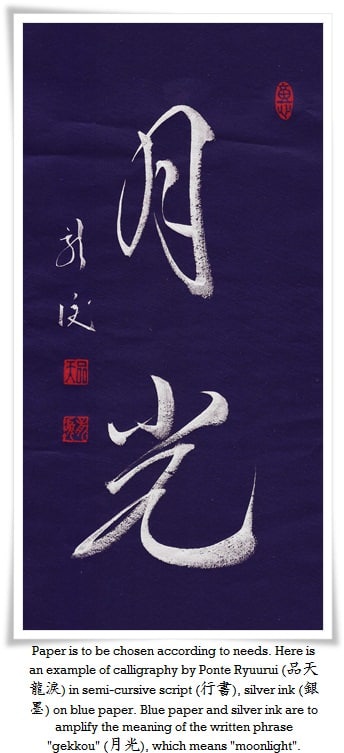The famous words of calligraphy sage Wang Xizhi (王羲之, 303–361) from the Jin dynasty (晉朝, 265 – 420) go: “use a hard brush on soft paper, and a soft brush on hard paper.” This golden rule is followed today, however one needs to remember than only the artist really knows what he wants. Learning how to choose paper and match it with the ink, brush and writing style may take few years of practice or more.
Paper needs to complement what we write and how we write it (for example, faster styles, such as cursive or semi cursive, require more absorbent paper), the size of our calligraphy, type of ink and brush, etc.
The great calligraphy theoretician Madam Wei (衛夫人, 272–349) of the Eastern Jin dynasty (東晉, 317–420) put forth a wealth of concepts however here I would like to write more about her idea called “Diagram of the Brush Battle” (筆陣圖, in Chinese: Bi Zhen Tu). In her debate she compared writing calligraphy to leading a battle, where the paper is a battlefield, the brush is a weapon, the ink is ammunition, and the ink slab is a castle with a moat (dissolved ink) and defensive walls. She concluded that if the battlefield is not suitable for the engagement, the outcome will be rather disappointing.
As with everything in calligraphy, the ability to choose the right paper comes with practice and better self-knowledge. If we are not aware of our own skill how can we determine what we need to utilize it?
As opposed to an inkstone or a brush, both ink and paper are transient treasures in a sense, and can be easily replaced. However, since once the ink is applied to the Xuan paper it will last forever, it is crucial to pick all four treasures of consistent quality. Only then will the final effect be pleasing both to the calligrapher and the viewer. A skilled calligrapher can perform well with nearly any tool, as he or she knows the art well. Nonetheless, practice should be always carried out with good quality treasures of the study.

